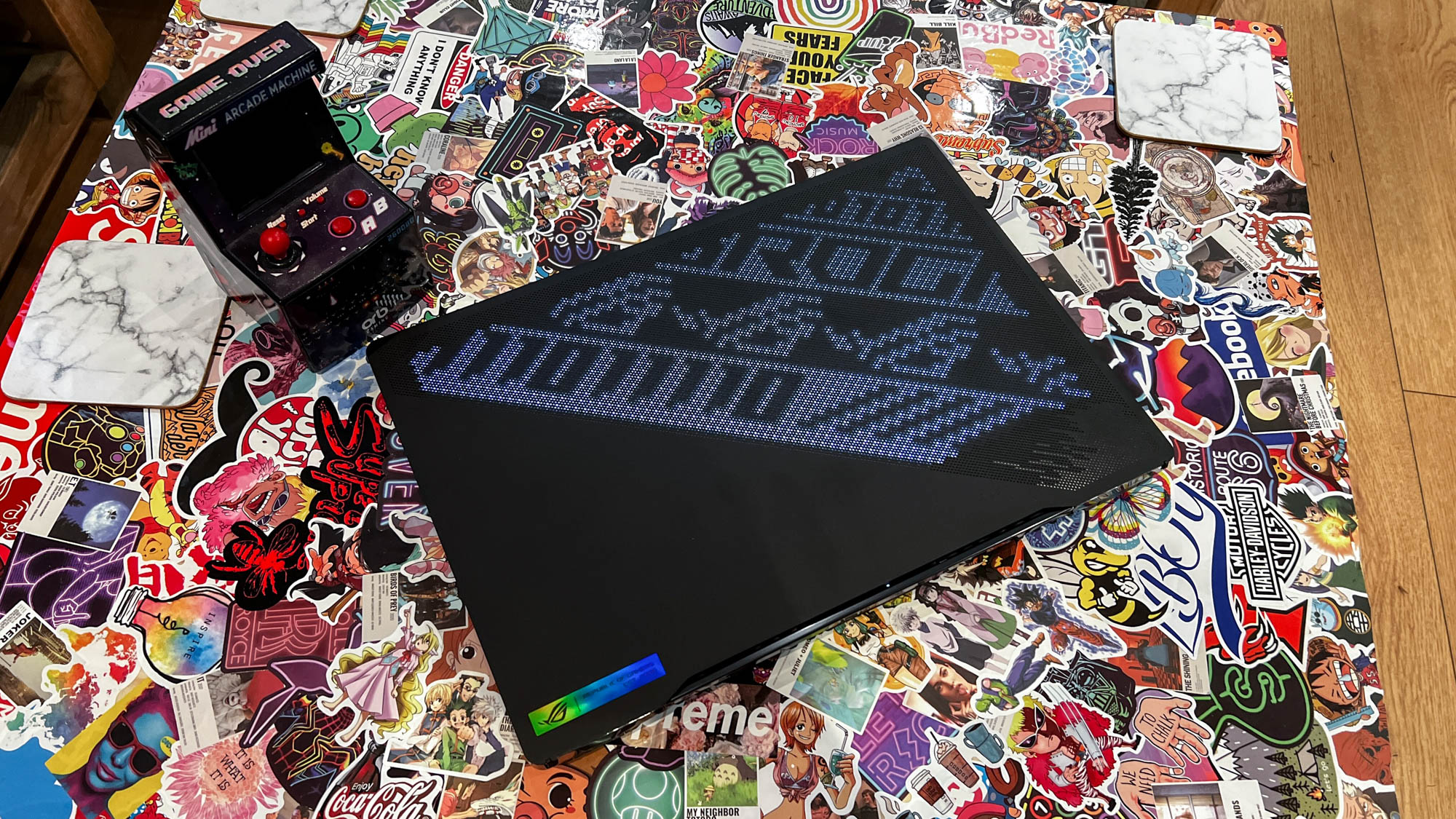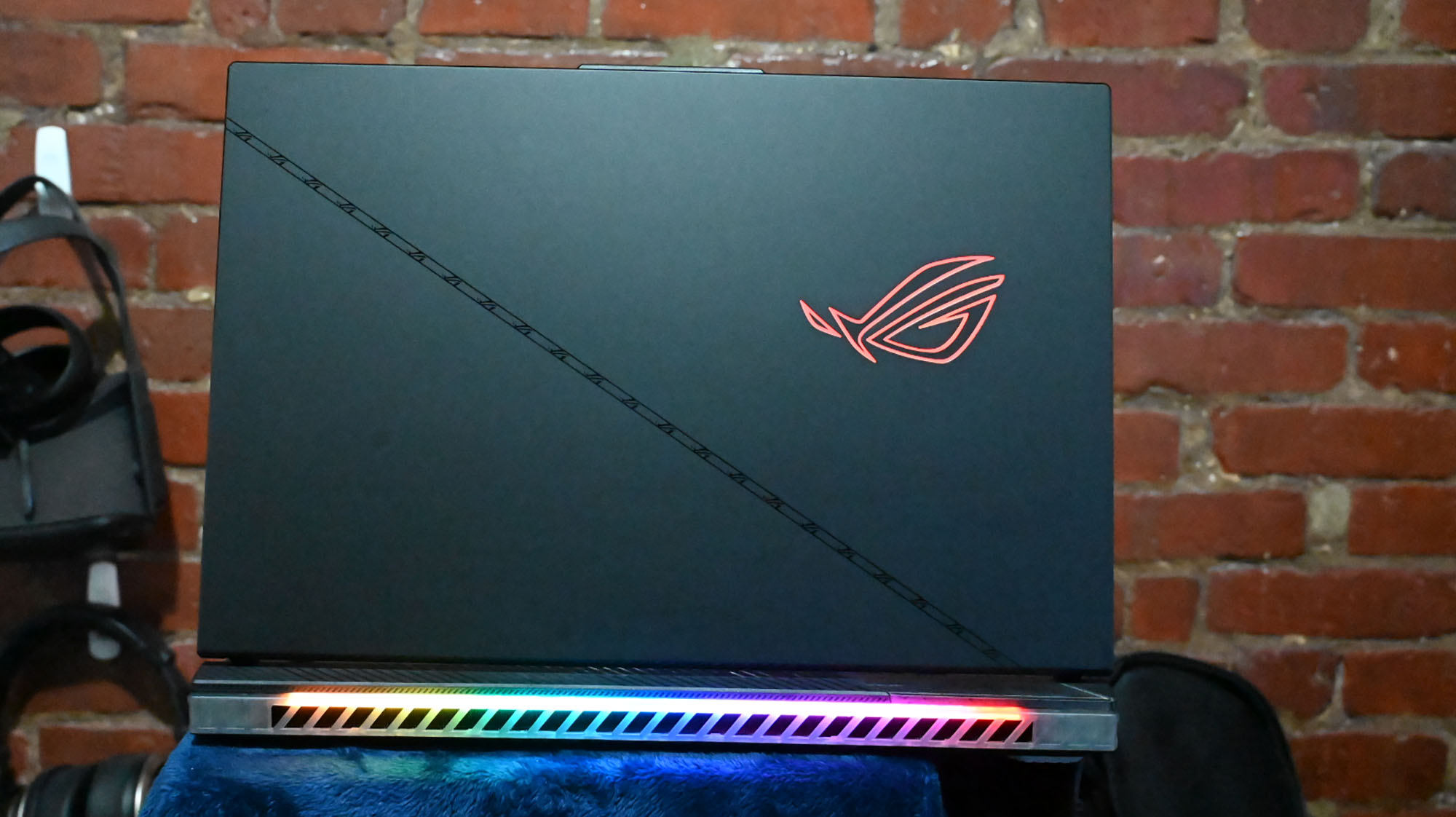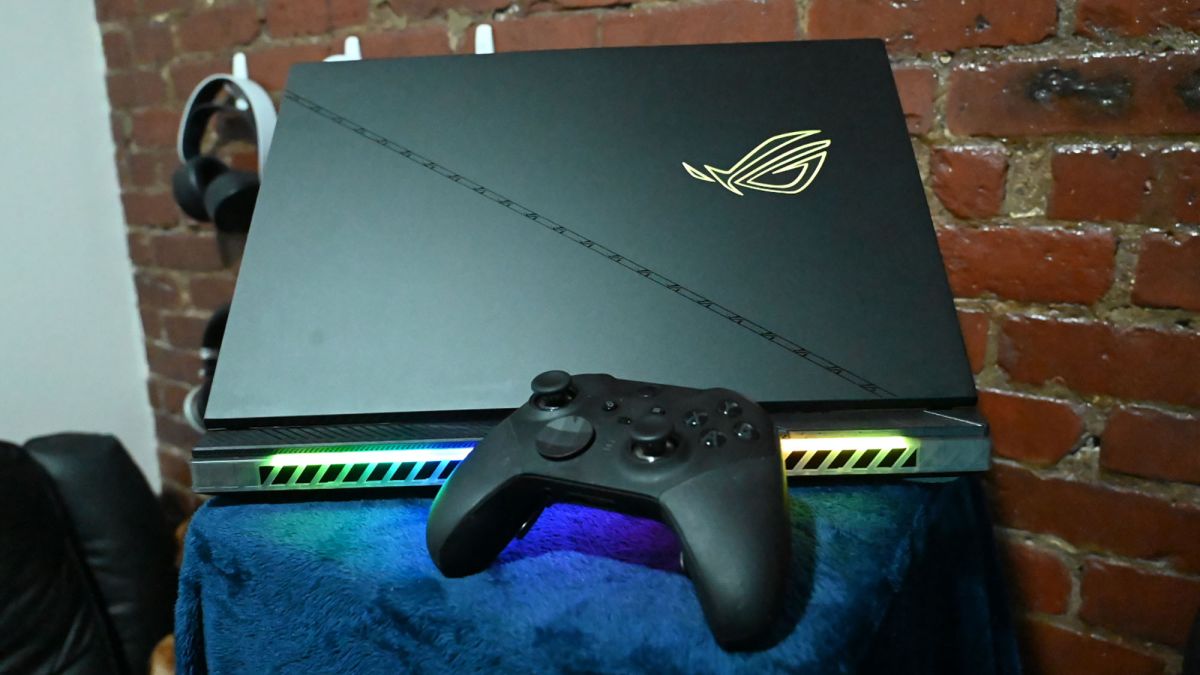DLSS 3.0 is arguably the future of squeezing extra performance out of your games — using an AI-driven form of supersampling to turbo boost frame rates across all RTX 40 series laptops.
But here’s the problem. This technology is just as stellar on cheaper RTX 4050, 4060, and 4070 systems. In fact, it’s so good for most gamers that it makes the idea of spending serious coin (and probably selling your kidney) to get an RTX 4090 system somewhat pointless. Let me explain.
Huge DLSS 3.0 gains
We’ve already gone into what DLSS 3.0 is and the vast increases in performance you see from it, but just as a reminder, here are the differences we saw while testing the Asus ROG Zephyrus M16.
| Benchmark | Performance | Turbo | Turbo + DLSS Balanced | Turbo + DLSS Quality | Turbo + DLSS High Performance |
|---|---|---|---|---|---|
| Cyberpunk (2560 x 1600 Ultra RT) | 53.82 fps | 67.79 fps | 108.78 fps | 95.19 fps | 149.11 fps |
| Hitman 3 (Dartmoor 1920 x 1200 High/Ultra settings RT) | 49.47 fps | 60.69 fps | 129.46 fps | 124.07 fps | 134.06 fps |
| F1 22 (Miami 2560 x 1600 Highest settings) | 50 fps | 62 fps | 151 fps | 133 fps | 168 fps |
Yes, that is an up to 177% increase in frame rate, which is still mind blowing to me every time I try it. This comes down to the ruthless efficiency of the AI frame supersampling — basically the next generation of anti-aliasing with the help of a machine learning algorithm, a Convolutional Neural Network (CNN) and Nvidia’s supercomputers.
All of this comes together to basically predict what the next frames will be and smooth out any gaps in the frame count and provide these impressive numbers. But these numbers are just from the priciest systems, and as you can tell from the headline of this piece, we’ve got to take a look at the cheaper options.

How that translates to cheaper systems
It’s worth noting that we don’t have any direct results of systems lower than the RTX 4090. However, we can dip into Notebook Check and see some other numbers based on Cyberpunk 2077 for ourselves to see whether these big gains are present across all systems.
| Laptop GPU | DLSS off | DLSS on (Balanced) |
|---|---|---|
| RTX 4050 (1080p RT Ultra) | 42 FPS | 115 FPS |
| RTX 4060 (4K RT Ultra) | 21 FPS | 43 FPS |
| RTX 4070 (1080p RT Ultra) | 42 FPS | 29 FPS |
As you can see, there is for sure a drop in the frame rate when compared to the cream of the crop (these GPUs are less powerful after all), but the percentage gains are still mightily similar to what we’ve seen ourselves. And when you think of what most people look for from a gaming laptop, these numbers are more than enough to have a great experience whatever you play.
So, you can see the question I’m leaning towards here: if you can get this capability (which could be vastly improved too with a little bit of tinkering to the resolution, as a lot of these tests were at 4K), then what’s the point of spending even more for the top tier?
Outlook

Look, I get what the critics will say about this take, and to be honest, I’m a little conflicted too. The pure horsepower of the RTX 4090 should always been considered in any purchase decision, and if you’ve got the money for it with a taste for pro-to-enthusiast gaming, then go for it.
But the numbers are clear. If we’re seeing this magnitude of improvement across all systems, then the question has to be asked — why pay for the top of the range when Nvidia’s supersampling is capable of doing a lot of the heavy lifting and providing frame rates at 4K ultra settings that are more than smooth enough for most gamers.
In my previous article about DLSS 3.0, I called this technology paired with the RTX 4090 a “serious desktop replacement,” and I stand by that. But not everybody shopping for a gaming laptop is looking for something in place of a gaming tower. They just want a laptop that plays their Steam library on the go.
So for most people with that in mind, the cheaper options will satisfy everyone for a good long while, and maybe that super high price on any 4090 is just not worth paying.
